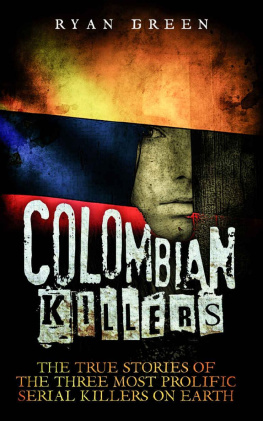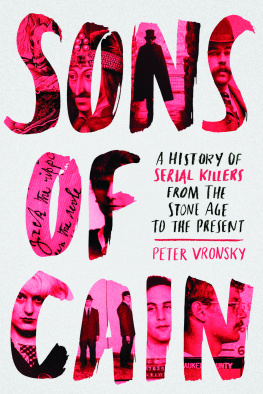SOCIAL MEDIA
MONSTERS:
Internet Killers
Authored by
RJ Parker
JJ Slate
Edited by: Hartwell Editing
Cover design by: Jacqueline Cross
Copyright 2014 by
RJ PARKER PUBLISHING, INC
United States of America
Contents
License Notes
This book is licensed for your personal enjoyment only. This book may not be re-sold or given away to other people. If you would like to share this book with another person, please purchase an additional copy for each recipient. If you are reading this book and did not purchase it, or it was not purchased for your use only, then please return to the authors and purchase your own copy. Thank you for respecting the hard work of both the Authors and Publisher. All rights reserved. No parts of this publication can be reproduced or transmitted in any form or by any means without prior written authorization from RJ Parker Publishing, Inc. The unauthorized reproduction or distribution of a copyrighted work is illegal. Criminal copyright infringement, including infringement without monetary gain, is investigated by the FBI and is punishable by fines and federal imprisonment.

Introduction
Murder. Kidnapping. Cannibalism. Suicide. All of these themes can be found in the following thirty-three true stories about various killers who have used the internet to locate, lure, stalk, or exploit their victims. As you read through the case files of this book, you will learn about the shocking lives led by online predators from all around the world.
This book is written in a way to help you understand the killer better by exposing his or her background and, if the information is available, the reasons that led the killer to commit the murders. These types of murderers are identified as people who are motivated by a psychological factor: some murderers are triggered by anger or jealousy, others kill as a way to seek attention, and some are merely in it for the thrill of the kill. Unfortunately, sometimes the real reasons behind the murderous acts you will read about in this book are not always known or understood.
These stories bring to light that any person can fall victim to an online killer, even if the perpetrator is living on the other half of the earth. How can you protect yourself from such dangers? In the last chapter of the book, well talk about the importance of online privacy and how to avoid sharing personal information online, a potentially dangerous and deadly act.
You will learn how killers are using all sorts of online networks to lure their victims, such as Craigslist, Facebook, chat rooms, and other social media sites. You will also learn about some cases where people have teamed up together to commit the murders.
At the end of each story, you will find the outcome of the stories, including their arrests, trials, and sometimes deaths. Thorough research has been made, drawing on many various resources, to come up with an accurate string of events defining the background, the crimes, and the aftermath of the killers life. As you continue reading, keep in mind that these are real people and real events.
While this book focuses on killers who use social media to assist in their killing, its important to note that the era of the internet didnt create these types of killers; they have always been around. The internet and the many variations of social media may have just made it easier for todays killers to find their victims. A few of the more notorious killers of this nature are briefly highlighted next.
The Lonely Hearts Killers
In the era before the internet, killers were known to use want ads in the newspaper to locate their victims. Raymond Martinez Fernandez and Martha Beck were a serial killer couple dubbed the Lonely Hearts Killers, or the Honeymoon Killers, who killed as many as twenty different women during 1947 and 1949 they met through the Lonely Heart ads they posted in local newspapers. Raymond was born on December 17, 1914. He served as a merchant marine in World War II, but on his return home after the war, he suffered a skull fracture in an accident aboard the ship. He spent three months in the hospital and when he was sent home, he was a changed man. Some believe it was this head injury that turned him into a cold-blooded murderer.
After the war, he began writing letters to women who had posted ads in the Lonely Hearts section of the newspaper. When he met the women in person, he would rob them of their money, jewelry, and other belongings. The women would often be too ashamed to call the police on Raymond and he was able to con many vulnerable women this way.
It is believed Raymonds first murder was a woman he dated for a brief time. Jane Lucilla Thompson was found dead in a hotel room in Spain after the couple traveled there together. Police were unable to determine her cause of death. Raymond was able to obtain all of her money and belongings by forging her signature on a will.
Raymond also met Martha Beck through a Lonely Hearts ad in the personals section of a newspaper. The two wrote letters together while Raymond lived in New York and Martha lived in Florida. They met for the first time in 1947, when Raymond traveled to Florida to visit her. Raymond told Martha about how he often met women through the Lonely Hearts ads and robbed them. The two teamed up and began scamming women together, with Martha posing as his sister or sister-in-law.
The crimes soon escalated into murder. They began killing together and discovered they enjoyed it. Their first victim was Janet Fay. Martha hit Janet in the skull with a hammer after catching her in bed with Raymond, who then strangled her to death. The murderous couple went on to kill as many as seventeen women, as well as the infant of one of their victims.
Thanks to the quick thinking of a suspicious neighbor living next door to one of their victims, the police zeroed in on the killer couple squatting in the house and brought them into the station for questioning on February 28, 1949. There, they admitted their crimes and signed a seventy-three-page confession.
The couple put to death on the same day by the electric chair at Sing Sing prison in New York on March 8, 1951. Raymond was executed first, and his lover was executed shortly after.
The Want Ad Killer
Harvey Carignan was born on May 18, 1927. He lived a troubled childhood, compounded with behavioral problems and bedwetting. When he was eight years old, his mother sent him to live with his aunt and uncle, who quickly sent him back home. When he was ten, he was sent to live with his grandmother, who soon sent him to another aunts house. When he ran away to live with his mother again, she attempted to put him in an orphanage. He was finally sent to a reform school at age twelve, where he remained until he was eighteen years old. He later claimed that female employees at the reform school sexually abused him. As soon as he turned eighteen, Harvey enlisted in the army, where he was stationed in Anchorage, Alaska.
In 1949, he was sentenced to death by hanging in Alaska for raping and murdering a woman named Laura Showatler. His death sentence was reversed, however, after his lawyers were able to convince the courts that his confession had been coerced. He was released on parole in 1960, where he continued to get into trouble with the law for various crimes, such as burglary and assault. In 1973, Harvey posted an ad looking for employees to work for him at his service station. A young girl named Kathy Miller responded to his ad. Her remains were found a month later, wrapped in a sheet of plastic and discarded in an Indian reservation in Washington State. Her head had been bashed in with a hammer. It was this killing that later earned Harvey the nicknames The Want Ad Killer and Harv the Hammer.
Next page












